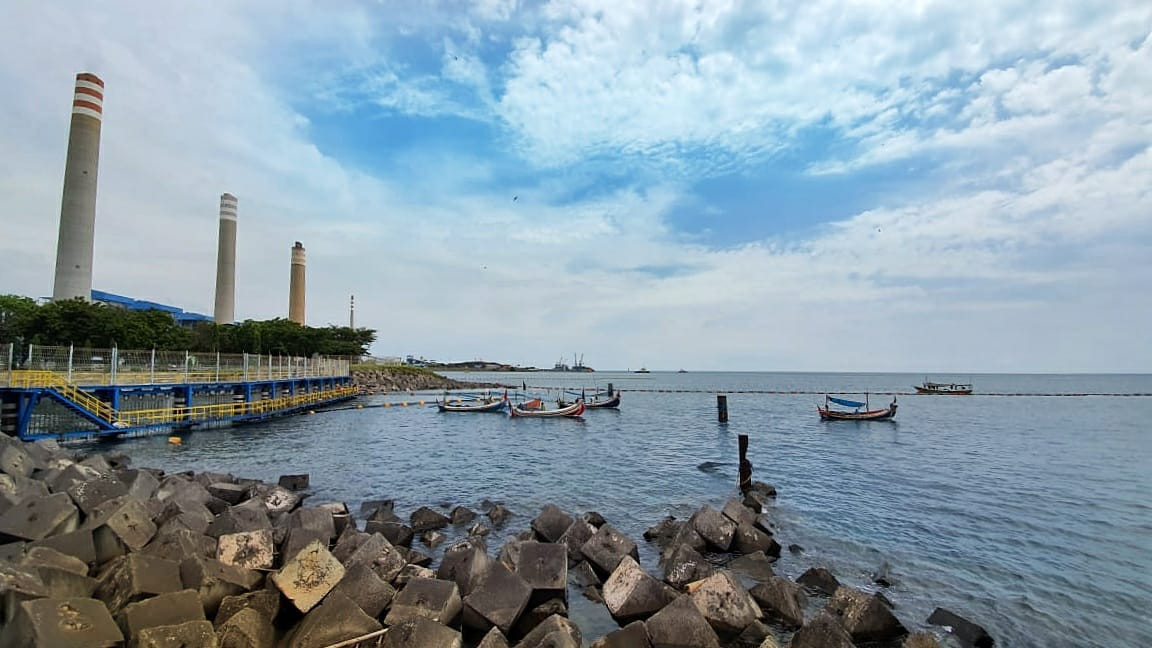Popular Reads
Top Results
Can't find what you're looking for?
View all search resultsPopular Reads
Top Results
Can't find what you're looking for?
View all search resultsPLN books $2.8b loss in Q1 amid weakening rupiah
Change text size
Gift Premium Articles
to Anyone
 The Paiton coal-fired power plant in East Java is pictured in this undated photo. State-owned electricity company PLN booked a net loss Rp 38.9 trillion (US$2.76 billion) in the January to March period, down from a net profit Rp 4.12 trillion in the same period last year, the company’s financial report showed. (PLN/PLN)
The Paiton coal-fired power plant in East Java is pictured in this undated photo. State-owned electricity company PLN booked a net loss Rp 38.9 trillion (US$2.76 billion) in the January to March period, down from a net profit Rp 4.12 trillion in the same period last year, the company’s financial report showed. (PLN/PLN)
S
tate-owned electricity company PLN’s bottom line has plunged into the negative in this year’s first quarter after the rupiah exchange rate fell to a record low in March.
PLN booked a net loss Rp 38.9 trillion (US$2.76 billion) in the January to March period, down from a net profit Rp 4.12 trillion in the same period last year, the company’s financial report showed.
The net loss was driven by first quarter foreign exchange losses of Rp 52 trillion, down from a gain of Rp 4 trillion in the same period last year.
The rupiah fell as low as Rp 16,575 against the United States dollar in March, the lowest level since the 1998 financial crisis, before rebounding to around Rp 14,000 in June.
“However, these are unrealized foreign exchange losses such that, if it was calculated using June rates, according to the report, these costs will not be there,” said energy analyst Elrika Hamdi in a statement on Monday.
The report also showed PLN’s revenue rose slightly by 5 percent to Rp 72.7 trillion. Notably, the company excluded compensation income, as per a recent regulation, that would have amounted to a significant Rp 4.4 trillion, according to PLN.
Meanwhile, expenses rose by a steeper 7 percent to Rp 78.89 trillion, led by higher payments to Independent Power Producers (IPP), particularly those that operate large coal-fired power plants (PLTU).
“Payments to IPPs will rise, especially if more large-scale PLTUs begin commissioning this year,” added Elrika, a researcher with the Ohio-based Institute for Energy Economics and Financial Analysis (IEEFA).
PLN guaranteed buying power from IPP-owned coal plants to incentivize electrification, at the behest of the government. However, the incentive has become a burden for PLN as the electricity company struggles to sell the electricity.
Going into the second quarter, high IPP payments and low electricity demand amid partial lockdowns (PSBB) will present risks for PLN’s finances, said Elrika.
Previously, analysts warned that at least two of PLN’s ongoing programs this year could pose risks for the company’s post-pandemic financial recovery.
The first program is PLN’s free and discounted electricity scheme for 31 million of Indonesia’s poorest households as a part of the government’s stimulus package to cushion the economic impacts on the country's most vulnerable citizens amid the COVID-19 pandemic.
The three-month scheme was expected to cost Rp 3.5 trillion but the government recently announced it would be extended by another three months until September. Government officials said the state would reimburse PLN but did not provide a timeline.
The government still owes PLN Rp 48 trillion for subsidies incurred in 2018 and 2019.
The second program is PLN’s Take-Or-Pay policy, in which the company guarantees it will buy a certain amount of electricity from independently owned coal-fired power plants — even when demand collapses, as is now happening during the pandemic.









